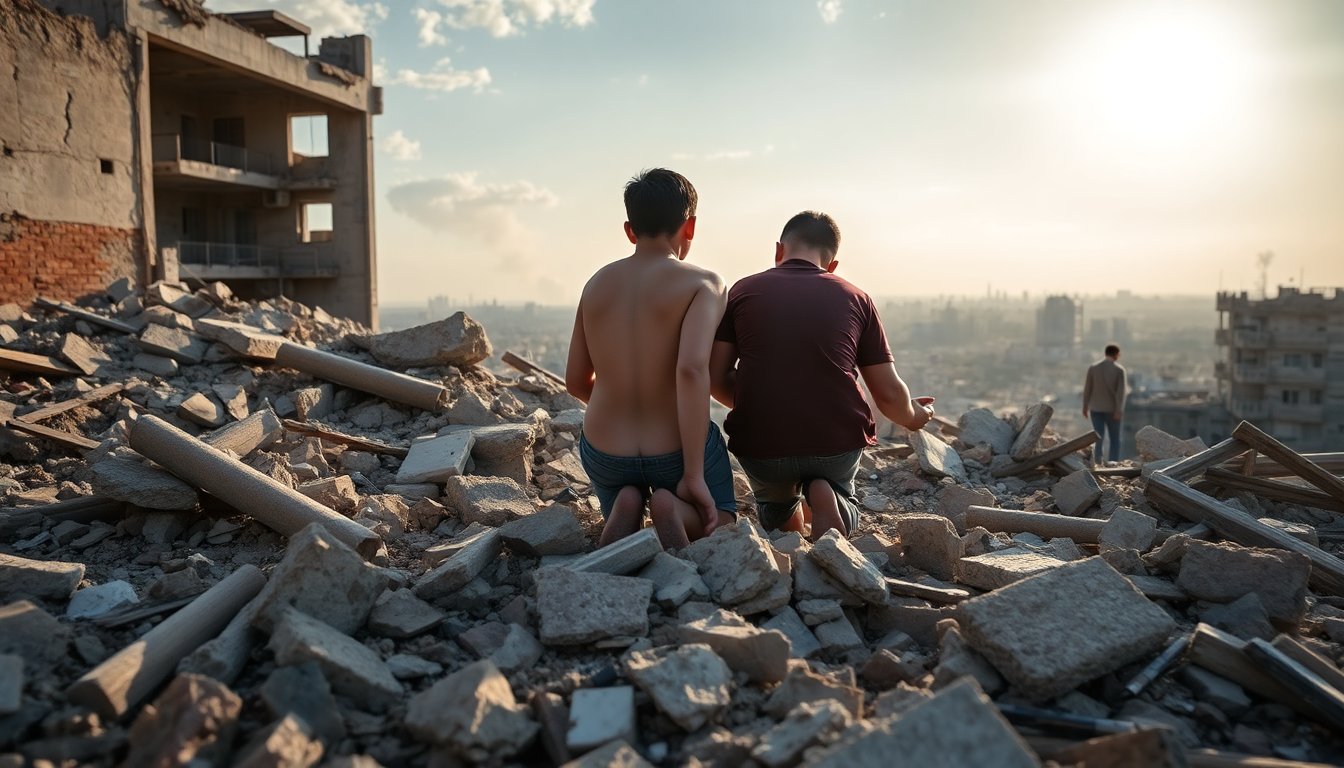Table of Contents
In the heart of Gaza City, the morning sun casts a somber glow over the remnants of a once-bustling neighborhood. Among the debris, Mu’ayyad Ajjour and his teenage neighbor, Mohamed Zaida, have dedicated themselves to a heart-wrenching mission: the search for five-year-old Masa, Ajjour’s cousin, who vanished during a devastating airstrike. Following the recent ceasefire, they have seized the opportunity to sift through the rubble, clinging to the hope of finding her remains.
At the site of destruction, Ajjour, aged 37, has fashioned a makeshift pulley system from a black mixing dish. His younger companion, 17-year-old Zaida, crawls into a precarious crevice he has painstakingly excavated. This daily ritual has become their lifeline; Zaida sends debris-filled bowls back to Ajjour, who meticulously sifts through the remnants using a repurposed fan cover.
The relentless search for Masa
As the two men toil under the oppressive silence of the site, the three-storey building that once housed Masa and her family looms overhead, its compromised structure threatening to collapse. The air is thick with dust and despair as they dig deeper, their spirits undeterred by the grim reality. Each passing day brings a renewed hope of finding any trace of the young girl, lost amidst the chaos of war.
The heartbreaking backstory
Tragedy struck in March when a residential building, where Masa sheltered with her family, was targeted by an airstrike. Eyewitness accounts revealed that Masa, along with her parents, fell victim to the violence. While her father remains unaccounted for after sustaining multiple gunshot wounds, her mother, who was pregnant at the time, is recovering at Al-Shifa Hospital. Sadly, the newborn did not survive.
Since that harrowing day, Masa has not been seen. The hope that her body might be found beneath the ruins drives Ajjour and Zaida each day. “We are searching for anything,” Zaida lamented, “a skull, a backbone, or even a pelvis. This is what a year and a half of despair has left behind.”
Challenges of the recovery effort
The two men have committed to searching from sunrise to sunset, but progress has been painfully slow. “We’ve only managed to traverse seven meters in all this time,” Ajjour said, frustration evident in his voice. The lack of adequate tools and support has compounded their difficulties, yet their determination remains unwavering.
One day, as Ajjour sifted through a fresh pile of rubble, his fingers brushed against something unexpected—a small, white patent leather shoe. Examining it closely, he pondered whether it once belonged to Masa. “Hammood, where did you find this? Focus on the same area,” he urged Zaida, his voice filled with urgency.
Gently holding the shoe, he wiped away the dust and placed it on a nearby block of concrete. “This gives us hope to continue our search,” Ajjour noted. “We cannot lose faith.”
The grim statistics
The grim reality of their situation is underscored by the United Nations, which estimates that at least 11,000 bodies remain buried under the rubble across Gaza. The ongoing conflict has resulted in devastating losses, including over 69,000 Palestinian lives since the start of Israel’s military response.
Efforts to clear away the debris have begun, with the UN Development Program deploying excavators to restore vital services in Gaza City. However, with an estimated 55 to 60 million tonnes of rubble remaining, the path to recovery is daunting and may take years.
Commitment to the search
At the site of destruction, Ajjour, aged 37, has fashioned a makeshift pulley system from a black mixing dish. His younger companion, 17-year-old Zaida, crawls into a precarious crevice he has painstakingly excavated. This daily ritual has become their lifeline; Zaida sends debris-filled bowls back to Ajjour, who meticulously sifts through the remnants using a repurposed fan cover.0
At the site of destruction, Ajjour, aged 37, has fashioned a makeshift pulley system from a black mixing dish. His younger companion, 17-year-old Zaida, crawls into a precarious crevice he has painstakingly excavated. This daily ritual has become their lifeline; Zaida sends debris-filled bowls back to Ajjour, who meticulously sifts through the remnants using a repurposed fan cover.1


